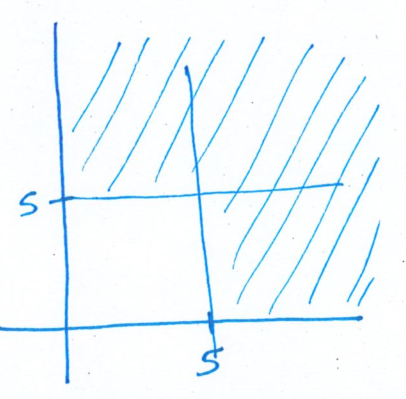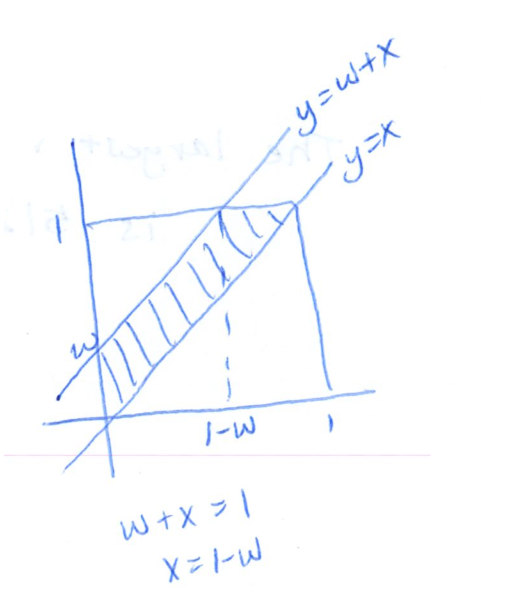01
(1) Start by finding the CDF of
Let us compute
Thus, we have that:
(2) Finally, differentiate to find the density
02
(a)
(1) First, we define the PDF’s and CDF’s of
(2) Now:
since, by definition,
By independence:
Thus, we have:
and thus,
(b)
(1) Similarly, for
by independence. Thus, we have that:
(2) Thus, the density function is given by:
03
(1) Let
(2) First, consider the range of
(3) Now that we have a range for
(4) Similarly,
(5) Now that we have bounds, we can finally apply the convolution formula:
(6) We now take cases to deal with the upper bound: when
04
(1) Convolution formula:
The range of
(2) Divide into cases:
(Note: there are
(3) Write out piecewise function:
05
(a)
Compute
(b)
Compute
- Note that
(c)
Compute
- Since
(d)
Compute
- Since
06
(1) Define random variables for partitioning the 30 flips into groups of 10.
Let
Let
Let
Clearly,
Note that
(2) Compute
(3) Compute
(4) Compute
Since
Thus,
(5) Compute
(6) Compute
07
(1) Define indicator variables
Let
Let
Note that they are independent since
Let
(2) Compute
08
(1) Recall the formula for
Therefore, if
(2) Compute
Thus,
(3) Isolate
Thus,
09
(1) Define random variables to describe the problem.
- Let
- Let
(2) Compute
- This represents the expected time the plumber finishes the job.
- Thus, we expect the plumber to finish at
(3) Compute the variance of the finish time.
10
(a)
Compute
(b)
Compute
(c)
Compute
(d)
(1) Compute
(2) Compute
(e)
(1) Compute
(2) Compute
(f)
Compute
(g)
Compute
(h)
Determine independence.
- Since
11
(a)
Note that the formula for
(b)
Compute
(c)
(1) Recall the formula for
(2) Compute
(3) Compute
(4) Compute
(d)
(1) Recall the formula for
(2) Compute
(3) Compute
(4) Compute
12
(1) Write PDFs:
PDFs of
Joint PDF using independence:
(2) CDF of Min:
Write
(3) Evaluate with formula for
For
Therefore:
13
(1) Write PDFs:
PDFs of
Joint PDF using independence:
Method 1: CDF first
(2) CDF of sum:
Write
Plug in
For
For
(3) PDF from CDF:
Method 2: Convolution formula
(2) Convolution:
For
For
14

15

(a) Range of
(b)
Alternate:
(c)
16
(b)
17
(a) From the sketch, we observe that
For
The complete CDF can be written as
(b) By taking the derivative, the PDF is
Thus,
(c) Since